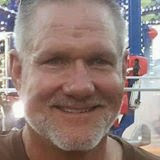Business Tips From Bikers

I’ll let you in on a little secret about myself. I am a 47 year old man who has been riding motorcycles since he was eight. Well, that’s if you can classify something powered by a 5 horse power lawn mower engine as a motorcycle. But there has always been something with only two wheels propelling me down some road somewhere in America for almost 40 years. And it is amazing the lessons one can learn from motorcycle riding that we should apply to business to keep our companies strong, powerful, and moving at a rapid pace towards our desired destinations. One of the most challenging, dangerous, and exhilarating experiences a rider can have is taking curves on his motorcycle. So here are three lessons every biker knows about taking curves that every small business owner should know about growing a profitable business.
1. Look at where you want to go and not at where you are heading.
For a rider, that seems like an unnatural thing to do. We want to see what our bike is doing and what kind of road we are approaching. But a good rider knows to keep his eyes fixed on the road he wants to be on around the curve and not on the immediate pavement of the curve itself. That may mean having our heads looking at a 45 to 90 degree angle away from the direction the bike is heading. All good riders know that the bike will follow our vision. Our eyes will tell the bike where to go and almost immediately we will be heading in a new direction. The best thing a business owner can do is the same thing: keep your eyes on where you want your business to go and not where it is at the present moment. If your business is heading into an unprofitable curve, look at where it can be; where it should be going and start heading in that direction. There are many stories of small home based businesses that look like nothing. But the businessperson had a dream of what a large, successful, thriving business looked like and they kept moving in that direction. Before they knew it, their business followed their eyes.
2. Don’t apply the brakes.
One of the worst things a rider can do when the curve gets “hairy” is to apply the brakes. It actually causes the rider to lose more control of the bike. The best riders actually lean harder and accelerate. Applying the gas will really cause the bike to master the curve more carefully and be safer. I know it sounds strange, but the same thing happens in business. Many business owners panic and apply the brakes to their business when a curve in the road appears. Instead of thinking of new and creative ways to increase sales when cash flow gets scrawny, they start thinking of all the ways to “throttle back” by laying off people, selling their assets, and going into survival mode. Instead of leaning harder into the adversity, they let up and lose all the momentum they had accumulated. Bob Proctor in his brilliant series “Power Principles for Creating More Wealth” says to attack when times of lack seem to be approaching. There were actually people who made money during the great depression. Why? They saw the scary curve, conquered the fear, leaned harder and hit the gas. And lastly,
3. Enjoy the trip.
I have ridden through the Rockies. I have traveled the twisty roads of the Appalachians. And I can tell you the trip is amazing. There is nothing like fresh air hitting you in the face, the warm sun on your back, and the adventure of picking a road at random and seeing where it goes. It's the freedom that is incredible. Like business, there are people who say that motorcycles are dangerous and I should never be on one. They are also the same people who say “most businesses fail” and you should just stay in the safety of a corporate job. They are wrong on both accounts. Although mortality rates are indeed higher, one is actually safer on a bike than in a car. There are a higher percentage of wrecks in cars than in motorcycles. And there are actually more businesses that make it than fail. Don’t believe me? Check it out for yourself with the Small Business Administration. That 85% statistic that gets thrown around with the negative “nay-sayers” is for the businesses that do fail. If they fail, it usually happens in the first three years. But most of the businesses that have been started are still around. And that should be the testimony of yours.
So do me a favor. Enjoy the trip. You have made the awesome decision to start a business. Know that there will be many twists and dangerous curves ahead on your journey. Don’t hit the brakes and fall back. Accelerate ahead and lean hard. Keep your eyes on where you want your business to go and not on the immediate circumstances around you. But look around you during the trip. The scenery is gorgeous, and you are in the company of the brightest, best, strongest, and most adventurous people in America.
Have fun. And don’t forget to send us a postcard when you arrive!




